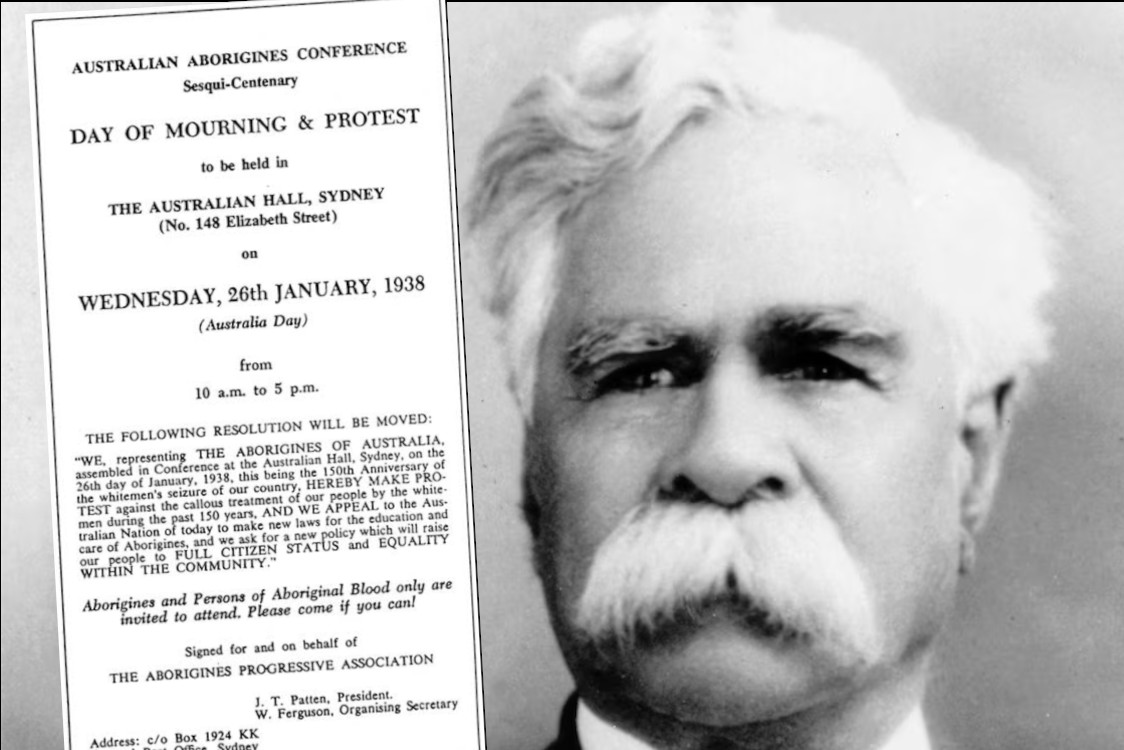The founder of Naidoc, the Christian First Nations’ leader William Cooper is getting more attention. Here are three items of news about Cooper which The Other Cheek was informed about since we posted a Matt Busby Andrews profile of Cooper this week.
• GodSpace, who provide “Relational, relevant and engaging Bible lessons for kids” in a three-year curriculum aimed at “scripture” teachers in schools are adding a William Cooper and NAIDOC lesson for 2024. It is currently in the checking process and will be in the “Yellow” series. (RI in Queensland and SRE in NSW are major users with their weekly access to public schools.
The other major lesson provider, CEP has been approached to do the same.
• The Australian Youth Orchestra has commissioned Nigel Westlake to write a piece for NAIDOC week inspired by the life of William Cooper. Ngapa William Cooper premieres in Canberra on July 9 and at the at the Sydney Opera House on 10 July 10.
• Reader and Cooper relative Michelle Jepson commented on The Other Cheek Facebook giving details of William Cooper’s Father. Here is here information in full – to avoid it “disappearing” the way Facebook comments do.
“What has not been previously understood is that William had a father, a young white man who arrived in Australia in 1854, at the age of 21 years. His name, Edward Freeman Cooper, and he lived with the Bangering tribe in very basic living conditions for 14 years – a total of 22 years in the immediate vicinity. William was born in 1860 when Edward was 27 years old.
“A photo of William taken approximately 1901 was found in a box of unexplored photographs, handed down through my family from the the estate of my great grandfather, Edward Freeman Cooper. DNA connects William and Edward as father and son.
“It appears from DNA evidence that William’s mother died in childbirth, or shortly after, as there is no DNA connection between three later born children, originally named Wilberforce, who changed their names to Cooper.
“That a man named James Cooper was noted on William’s 3rd marriage certificate and recorded as his father on that 1928 document, is likely explained by William not knowing what a “Christian” name was.
“Edward was commonly known as Cooper, Ned or Long Ned. The 1901 photograph is proof of an enduring role in William’s life. Edward was on very good and friendly terms with the then Premier of Victoria, Sir John O’Shannassy, who took William to live within and as a member of the O’Shannassy family for three years, Child mortality was high on the banks of the Murray River, and a suburban Melbourne home would be a safer environment for a young lad.
“Edward Cooper was a man of strong Christian beliefs, and while the missionary Daniel Matthews, has included comments on William in his diaries and manuscripts, and has been held up as William’s role model, there is a hidden history in the story of William, now being revealed. Edward lived nearby for many of those years. In later life, despite having a large family Edward adopted two young teenage girls, recently orphaned. Edward died in Point Lonsdale in 1916, not far from the location of the photo of William dated 1901 in my possession.”

